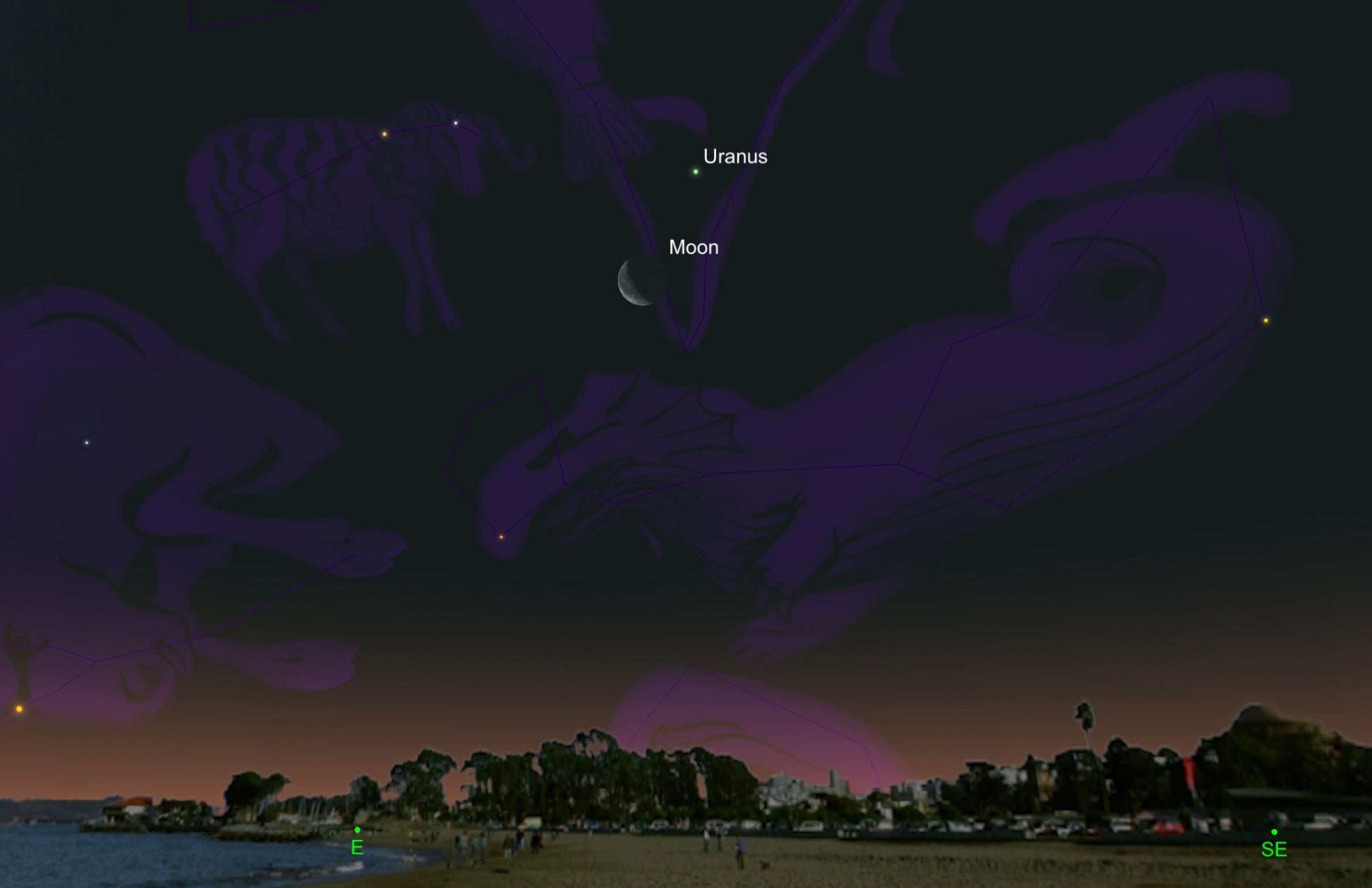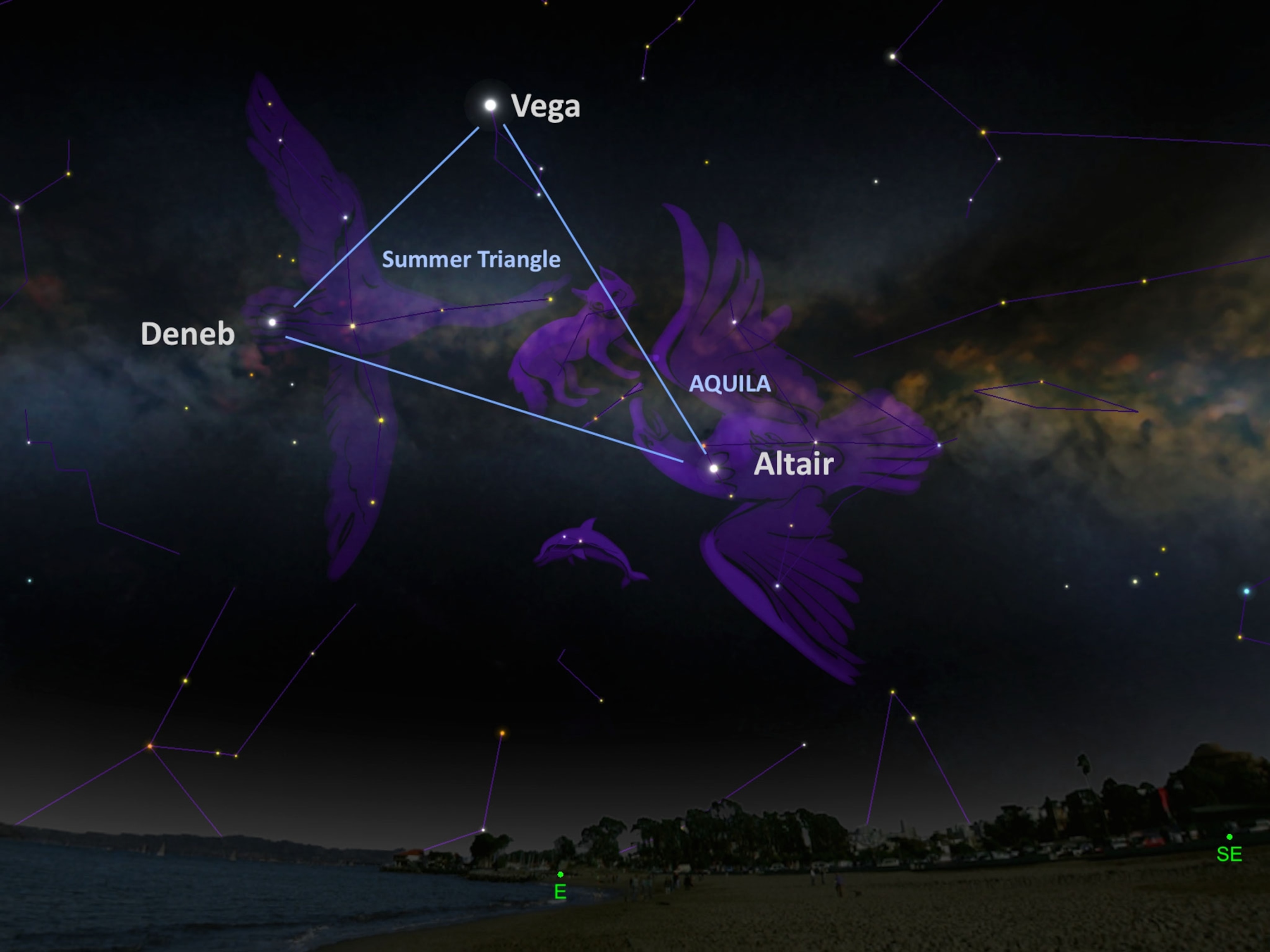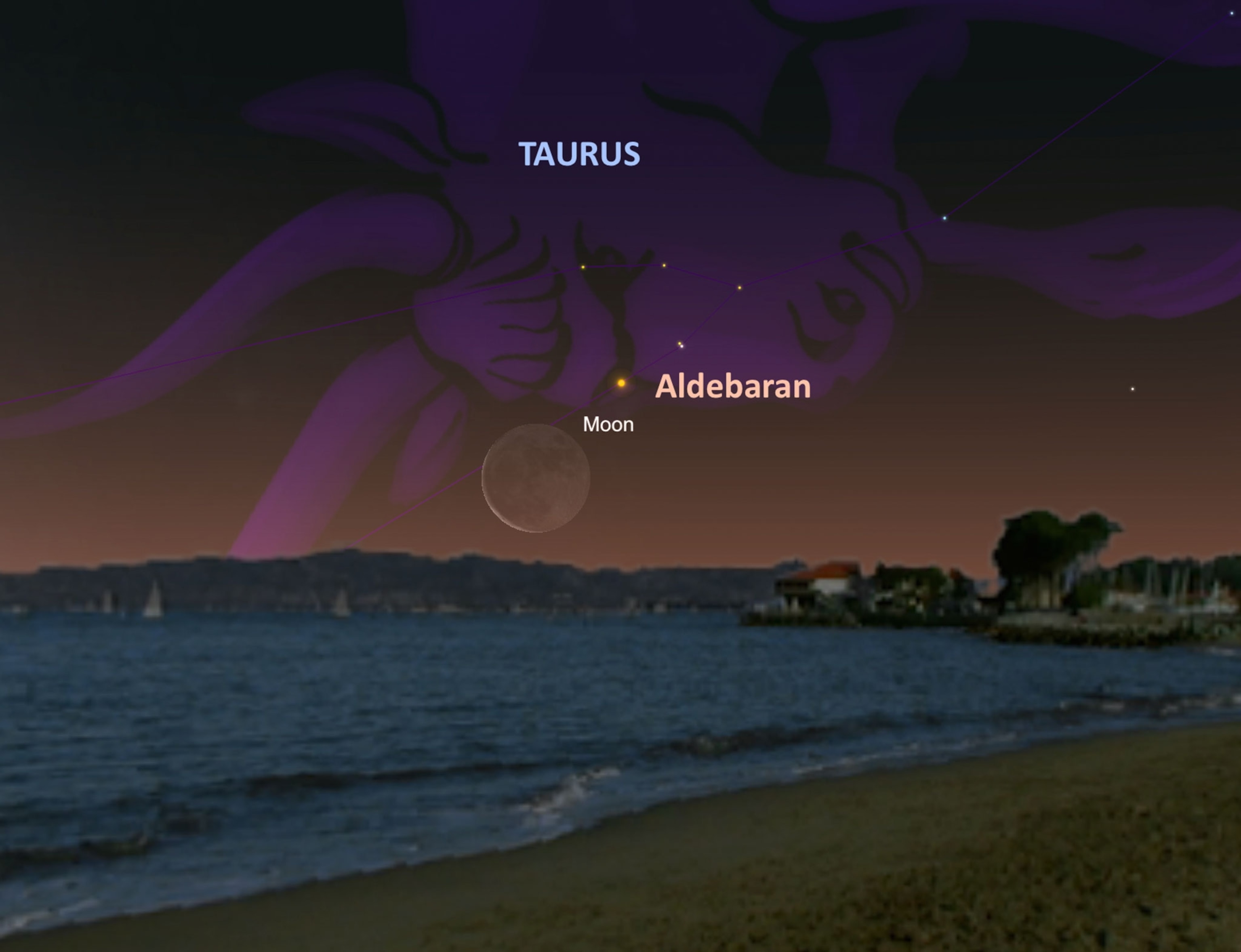
This Week’s Night Sky: Watch Jupiter and Uranus Sparkle
The largest planet in the solar system will put on a fine display, and the green-hued ice giant will glide near the crescent moon.
Jupiter Dominates. As darkness falls on July 1, look west for stunningly bright Jupiter, the largest planet in the solar system. The gas giant will put on a fine display until midnight, when it sets in the west.
On July 4, a NASA spacecraft called Juno will reach Jupiter after a five-year flight. The probe will endure a harrowing 35-minute maneuver through Jupiter’s punishing radiation belts to get into a long polar orbit. Once there, the Juno mission will study Jupiter’s atmosphere and deep interior, skimming closer to the planet’s cloud tops than any previous spacecraft.

Green Giant Glows. Before dawn on June 29, the planet Uranus will shine near the moon.
The two objects will appear to be only six degrees apart, with the ice giant to the upper right of the lunar crescent.
While Uranus will be difficult to spot, binoculars will reveal it as a tiny but distinct greenish blue disk. Located just over 1.8 billion miles (three billion kilometers) from Earth, Uranus’s light will take two hours and 48 minutes to travel across the solar system and reach our eyes.

Altair Rising. On July 1, look for the brightest star in the constellation Aquila, the eagle, rising in the eastern sky after darkness falls.
Located only 16.7 light-years from Earth, Altair is one of the closest and brightest naked-eye stars visible in the entire night sky, ranked as the 12th most brilliant star.
Altair is astronomically noteworthy because it rotates rapidly, spinning at about 186 miles (300 kilometers) a second, so one full rotation only takes nine to 10 hours. By contrast, our sun completes a rotation in about 25 Earth days.

Moon and Bull’s Eye. On July 2, early risers can check out the crescent moon parked near the bright orange star Aldebaran, the red eye of Taurus, the bull. The moon will be only five degrees away, equal to the width of your fist held at arm’s length.
Observers should find a viewing spot that is clear of obstructions toward the northeastern sky and use binoculars to initially find Aldebaran in brightening dawn.
Clear skies!
Andrew Fazekas, the Night Sky Guy, is the author of Star Trek: The Official Guide to Our Universe. Follow him on Twitter, Facebook, and visit his website.





